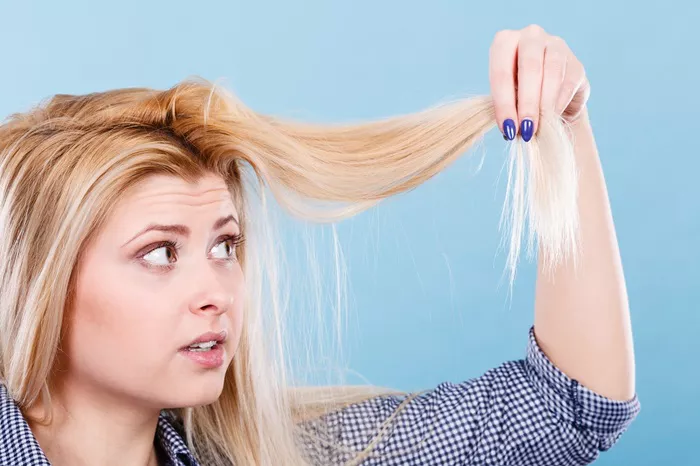Hair damage is a common concern for many people. Hairdressers often encounter clients with damaged hair, seeking solutions to restore health and vitality. This article explores whether hairdressers can fix damaged hair and the methods they use to achieve this.
Types of Hair Damage
Heat Damage
Heat damage occurs from the excessive use of styling tools like flat irons, curling irons, and blow dryers. These tools can strip the hair of its natural moisture, leading to dryness, breakage, and split ends.
Chemical Damage
Chemical damage results from hair treatments such as coloring, perming, and relaxing. These processes alter the hair’s structure, making it more prone to damage and weakening the hair shaft.
Environmental Damage
Environmental factors, such as sun exposure, pollution, and harsh weather conditions, can also damage hair. UV rays can break down the hair’s protein structure, while pollutants can accumulate on the hair, causing dullness and brittleness.
Mechanical Damage
Mechanical damage happens due to physical manipulation of the hair, such as brushing, combing, and tying hair tightly. This can cause breakage and split ends.
Assessment of Hair Damage
Visual Inspection
Hairdressers begin by visually inspecting the hair to identify signs of damage, such as split ends, breakage, frizz, and dullness.
Touch Test
By feeling the hair, hairdressers can determine its texture and elasticity. Damaged hair often feels rough and lacks elasticity.
Questioning the Client
Hairdressers ask clients about their hair care routine, including the use of styling tools, chemical treatments, and products. This information helps in identifying the cause of the damage.
Treatment Options for Damaged Hair
Deep Conditioning Treatments
Deep conditioning treatments are essential for replenishing moisture and nutrients in damaged hair. Hairdressers use masks and treatments that penetrate the hair shaft, providing intense hydration and repair.
Protein Treatments
Protein treatments help strengthen the hair by replenishing lost keratin. Hairdressers apply protein-based products to repair and fortify the hair structure.
Trimming
Regular trims are crucial in removing split ends and preventing further damage. Hairdressers trim the damaged ends to promote healthy hair growth.
Olaplex Treatments
Olaplex is a popular treatment that repairs broken bonds in the hair. It is especially effective for chemically damaged hair. Hairdressers apply Olaplex during and after chemical treatments to minimize damage and restore hair health.
Hydration and Moisture
Hydration is key to repairing damaged hair. Hairdressers recommend moisturizing shampoos, conditioners, and leave-in treatments to keep the hair hydrated.
Avoiding Heat and Chemicals
Hairdressers advise clients to reduce the use of heat styling tools and chemical treatments. They suggest alternative styling methods and protective styles to minimize damage.
SEE ALSO: Is It Bad to Wash Your Curly Hair Every Day?
Professional Products and Techniques
Salon-Grade Shampoos and Conditioners
Hairdressers use high-quality shampoos and conditioners that are formulated to repair and protect damaged hair. These products contain ingredients that nourish and strengthen the hair.
Leave-In Treatments and Serums
Leave-in treatments and serums provide ongoing protection and hydration. Hairdressers recommend products that shield the hair from environmental damage and heat.
Bond-Building Treatments
Bond-building treatments, like Olaplex, are used to repair and strengthen the hair from within. These treatments are often part of a salon service.
Scalp Treatments
Healthy hair starts with a healthy scalp. Hairdressers offer scalp treatments to remove buildup, promote circulation, and create a healthy environment for hair growth.
Prevention of Future Damage
Gentle Hair Care Routine
Hairdressers educate clients on adopting a gentle hair care routine. This includes using sulfate-free shampoos, avoiding over-washing, and gently detangling the hair.
Heat Protection
Using heat protection products is essential when styling hair with heat tools. Hairdressers recommend heat protectant sprays and serums to shield the hair from high temperatures.
Protective Hairstyles
Protective hairstyles, such as braids and buns, can minimize hair manipulation and reduce the risk of damage. Hairdressers suggest styles that protect the hair ends and reduce stress on the hair.
Regular Salon Visits
Regular salon visits for trims and treatments are crucial in maintaining healthy hair. Hairdressers provide professional care that can prevent and address damage early.
Can Hairdressers Fix Damaged Hair?
Extent of Damage
The extent of the damage determines how much hairdressers can repair. While some damage can be significantly improved, severely damaged hair may require a combination of treatments and time to restore health.
Client Commitment
Client commitment to following professional advice and maintaining a healthy hair care routine is essential for successful repair. Hairdressers provide guidance, but clients must also take steps to protect and nourish their hair.
Realistic Expectations
It’s important for clients to have realistic expectations. While hairdressers can improve the condition of damaged hair, complete restoration may not always be possible. Patience and consistent care are key.
Conclusion
Hairdressers play a vital role in fixing damaged hair through professional treatments, high-quality products, and expert advice. By addressing the causes of damage, using targeted treatments, and educating clients on proper hair care, hairdressers can significantly improve the health and appearance of damaged hair. Regular salon visits and a commitment to a healthy hair care routine are essential for maintaining and enhancing these results.

